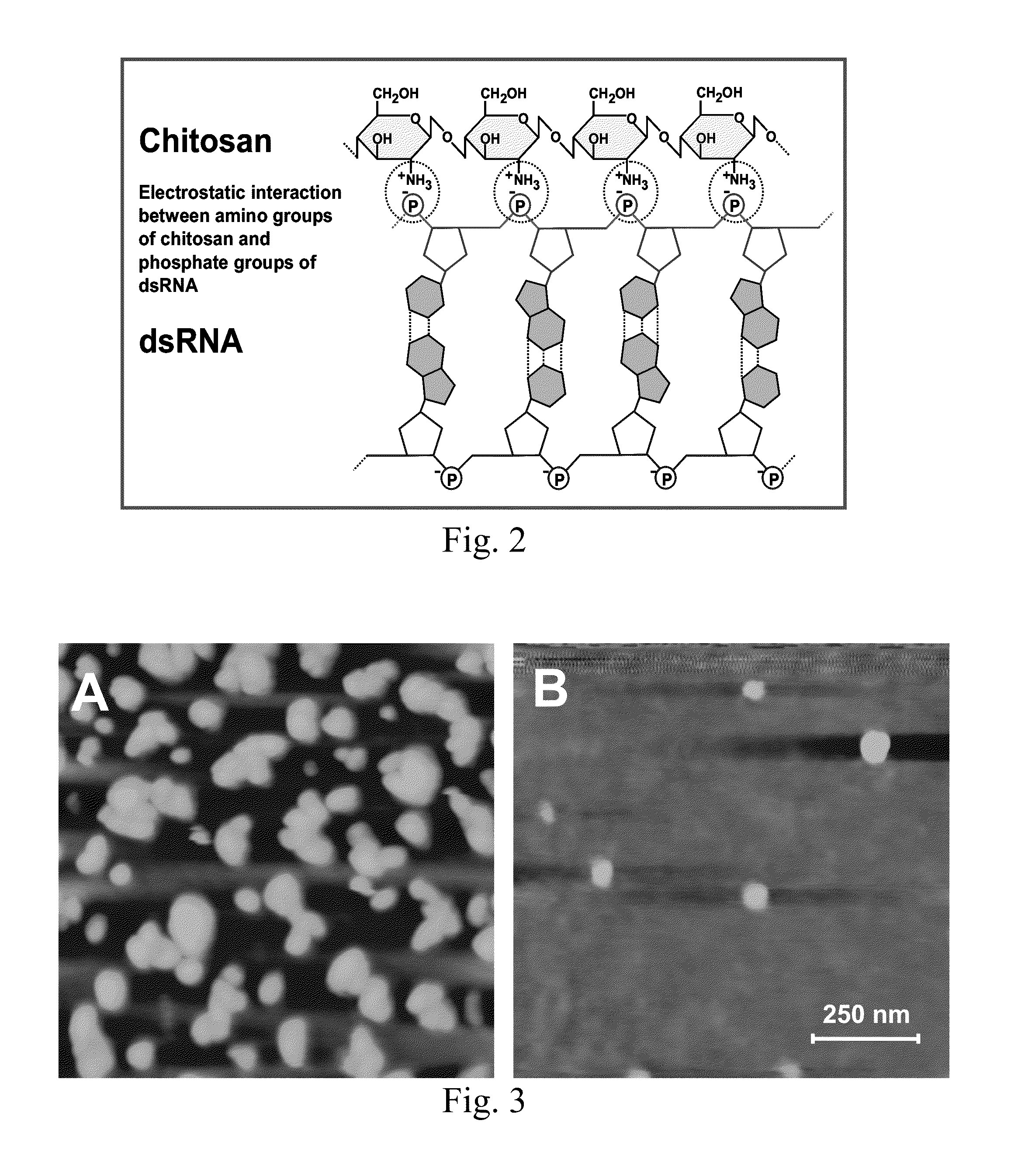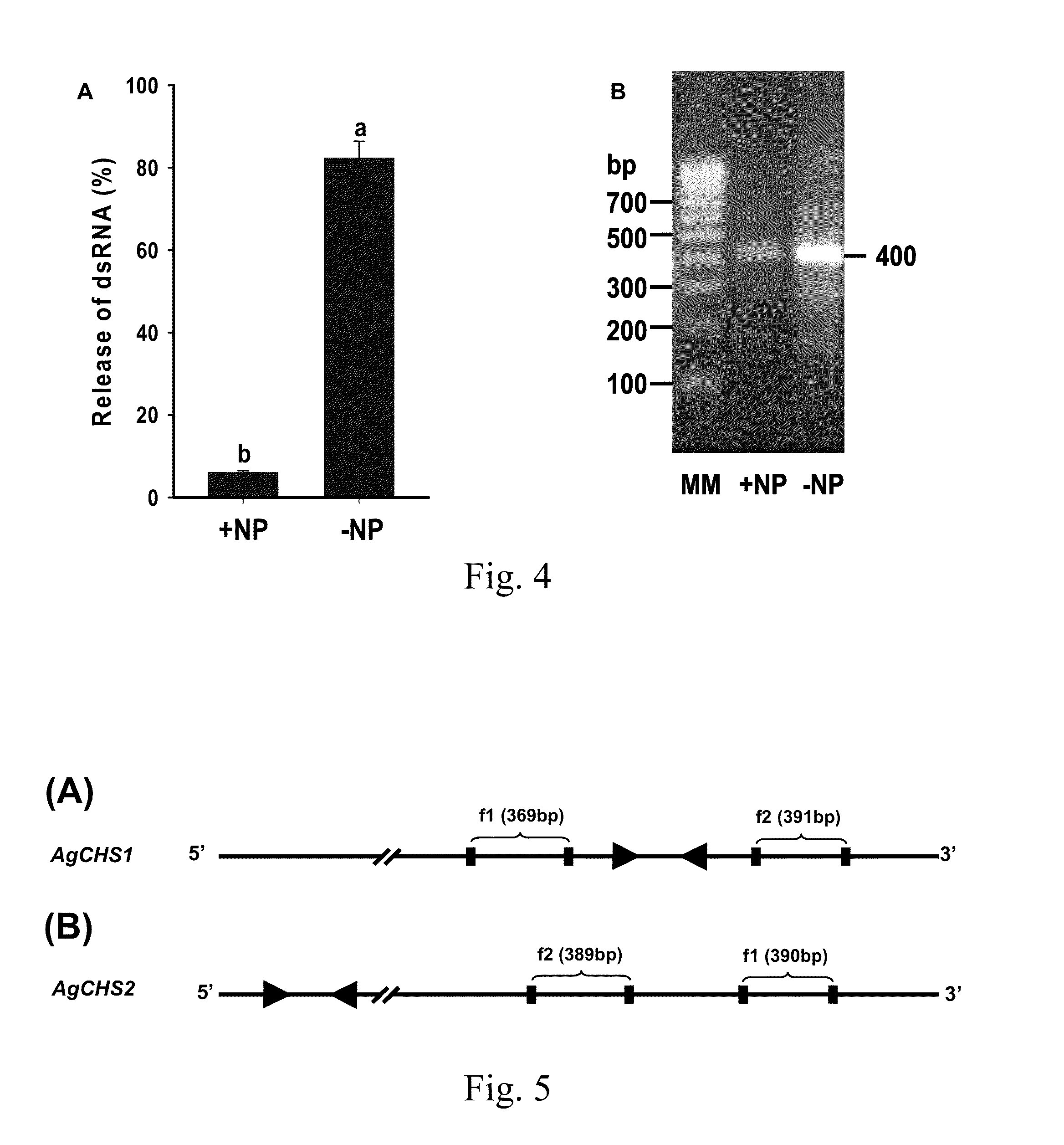Double-stranded RNA-based nanoparticles for insect gene silencing
a technology of nanoparticles and insect genes, applied in the field of rnai methods of pest management, can solve the problems of limited application, high cost, and high technical requirements of rnai, and achieve the effects of reducing chitin content, reducing susceptibility to pesticides, and disrupting the peritrophic matrix
- Summary
- Abstract
- Description
- Claims
- Application Information
AI Technical Summary
Benefits of technology
Problems solved by technology
Method used
Image
Examples
example 1
[0056]In this Example, we established a novel nanoparticle-based method for RNAi through larval feeding. We then examined the RNAi-mediated repressions of the transcripts for two related genes encoding chitin synthase 1 (AgCHS1) and chitin synthase 2 (AgCHS2). AgCHS1 (also known as AgCHS-A) is responsible for biosynthesis of the chitin found in the cuticular exoskeleton and other tissues that are ectodermal in origin, such as foregut, hindgut and trachea, and is exclusively expressed in epidermal cells and other ectodermal tissues, whereas AgCHS2 (also known as AgCHS-B) is responsible for biosynthesis of the chitin associated with peritrophic matrix (PM) and is specifically expressed in epithelial cells of the midgut. We further examined the effect of the RNAi on the biosynthesis of chitin and larval responses to different chemicals after RNAi, and demonstrated for the first time that the RNAi in mosquito larvae is systemic, a phenomenon in which local administration of dsRNA (e.g.,...
PUM
| Property | Measurement | Unit |
|---|---|---|
| diameter | aaaaa | aaaaa |
| temperature | aaaaa | aaaaa |
| time period | aaaaa | aaaaa |
Abstract
Description
Claims
Application Information
 Login to View More
Login to View More - R&D
- Intellectual Property
- Life Sciences
- Materials
- Tech Scout
- Unparalleled Data Quality
- Higher Quality Content
- 60% Fewer Hallucinations
Browse by: Latest US Patents, China's latest patents, Technical Efficacy Thesaurus, Application Domain, Technology Topic, Popular Technical Reports.
© 2025 PatSnap. All rights reserved.Legal|Privacy policy|Modern Slavery Act Transparency Statement|Sitemap|About US| Contact US: help@patsnap.com



